Commander Thomas Oxendine, USN
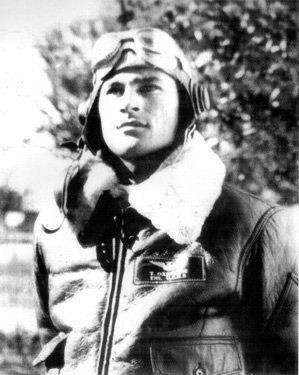
Ensign Thomas Oxendine, c. 1942. Courtesy of the Lumbee Tribe of North Carolina.
Born 23 December 1922 in Pembroke, North Carolina, Thomas Oxendine was the oldest of eight children. His parents were Thomas Hillard Oxendine and Georgia Rae Maynor, both recognized as Indian, meaning that Tom and his siblings were considered full-blood Indians.
Tom grew up in a distinctive tri-racial community in North Carolina. The racial composition of Robeson County was divided into White, Black, and Indian. Although both of his parents were members of a tribal community recognized by the state of North Carolina, the tribe lacked federal recognition and funding.[1] Following an amendment to the 1875 state constitution, the state legislature decided that the children of North Carolina would be taught in separate public schools—white and colored. The tribal community at Pembroke fought the strict divide, distinguishing themselves from both Blacks and Whites. [2] In 1885, members of the community petitioned the state to build their own schools.[3] Two years later, another petition resulted in a bill to establish a secondary school to train teachers, first known as the Croatan Normal School.[4]
Tom’s father was among those trained to teach the children of this community. His family also continued to farm their land, producing both tobacco and cotton.[5]
Oxendine started his education in a small two-room school for Indians. He then attended Cherokee Indian Normal School and, at the age of 15, finished his high school courses. He continued his education, taking college courses at the same institution where he had graduated high school from 1938 until 1942.[6]
In 1938, the federally funded Civilian Pilot Training Program (CPTP) had been established to increase the country’s number of qualified civilian pilots. Oxendine signed up for the first class offered at a nearby Lumberton airport in the summer of 1941, completing a three-month course along with 19 other students, including nine other Lumbee students.[7]
After the Japanese attack on Pearl Harbor in December 1941, Oxendine made the decision to leave college in his senior year and join the military.[8] Although he had the option to stay in college, he chose to serve in the Navy. He took his enlistment oath on 28 January 1942 at Charlotte, North Carolina. He was not the only one among his siblings to join. His brother Robert also enlisted in the Navy.
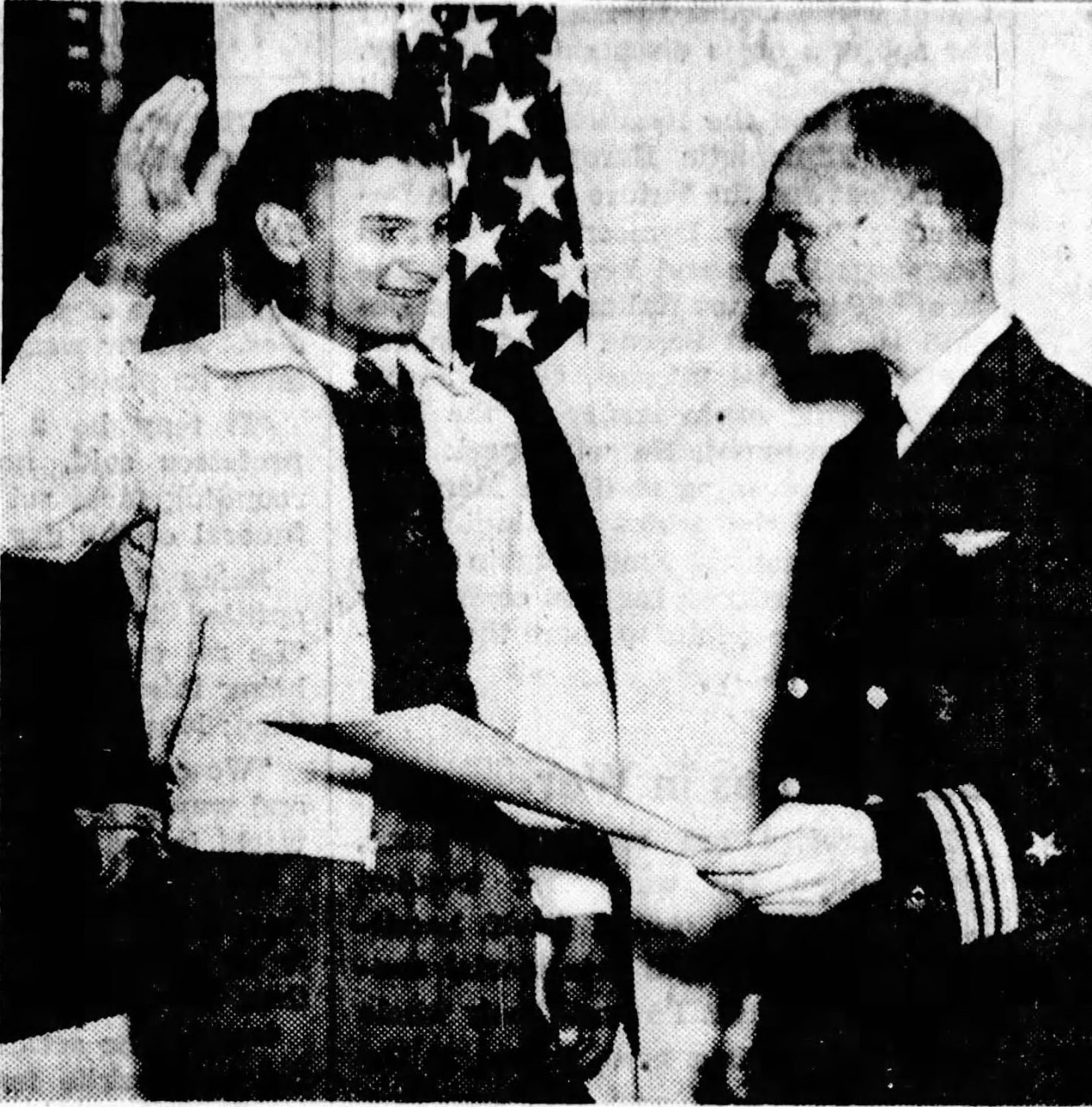
Thomas Oxendine takes his enlistment oath. (Atlanta Journal, 12 February 1942.)
There was no ethnicity classification for “Indian” on the processing forms he filled out. The choices were “Black,” “White,” or “Other.” Growing up in the racially binary system of the U.S. South, Oxendine was accustomed to being classified as “Other.” Although the natives of Robeson County were often treated as “Colored,” he had never been in a classroom with Blacks or Whites prior to joining the Navy because of the separate schools built by his tribal community.[9]
Upon enlisting in the Navy, Oxendine signed up for the V-5 aviation cadet program. His application received some scrutiny due to his racial background,[10] but ultimately the Navy needed pilots and he received his pilot’s license following his completion of the CPTP program. In February, the naval air cadet selection board approved his application.[11] He was assigned to the Naval Air Station (NAS) Atlanta in Georgia.[12] He reported for advanced training in May.[13] Despite Navy policies that effectively undercut the advancement of non-Whites, Oxendine was commissioned an ensign when he earned his naval aviator wings on 1 November 1942.[14]
Approximately 44,000 Native American men and women joined the armed forces during World War II. Almost 2,000 of those individuals chose to serve in the Navy.[15] Oxendine received extensive coverage by the press as the first Native American to complete U.S. Navy flight training. He was not the only Native American in the Navy Air Corps at the time, but he was one of the few. [16]
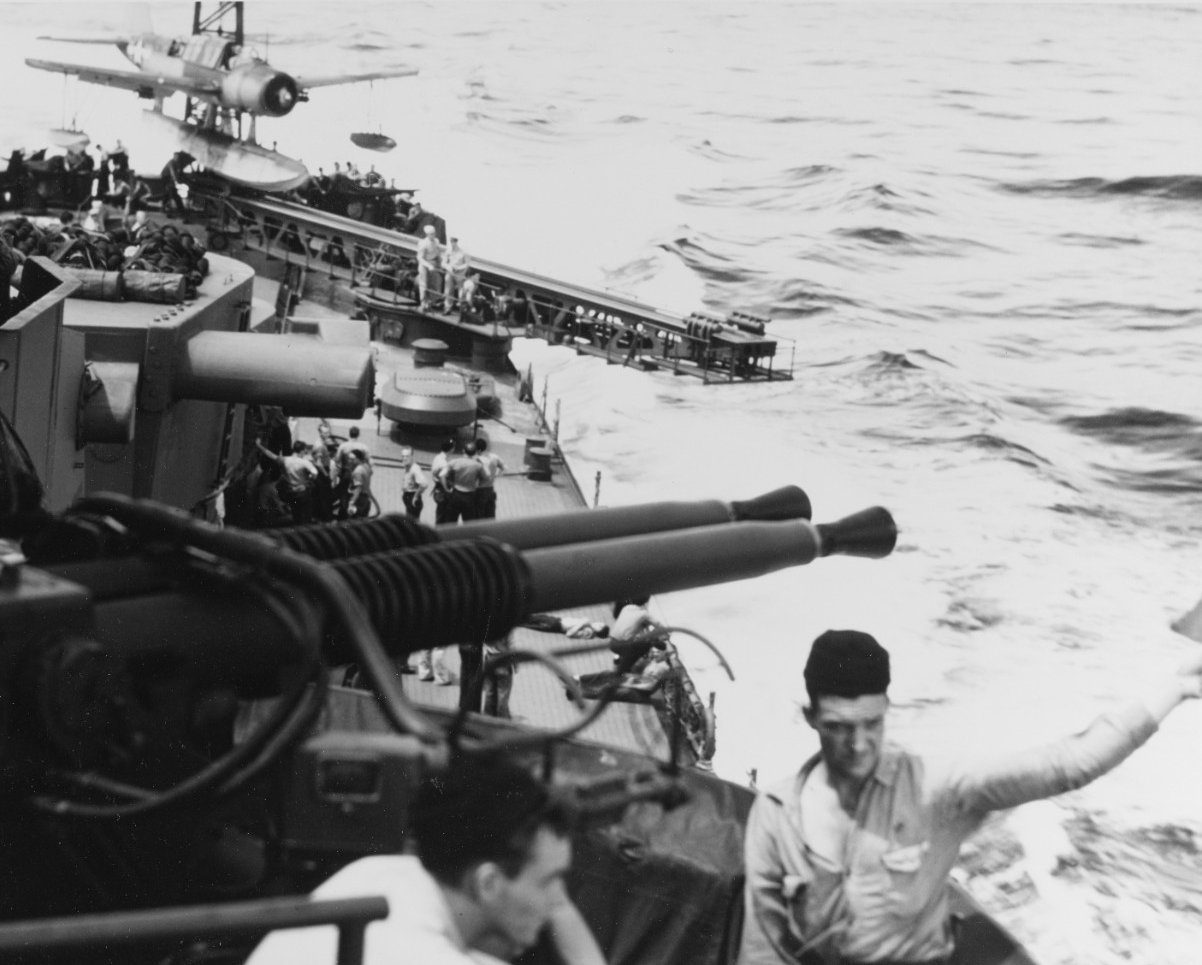
The crew of USS Mobile prepares to launch a Kingfisher floatplane from the port catapult, during the October 1943 raid on Marcus Island. (National Archives and Records Administration [NARA], 80-G-K-15826.)
Assigned to USS Mobile (CL-63) stationed in the Pacific, Oxendine flew the OS2U-3 Kingfisher, a two-seat floatplane launched by catapult from battleships or cruisers.
Early in the war, this aircraft was used for gunfire-spotting and observation missions. Later, the Kingfisher’s functions aircraft shifted to search-and-rescue missions, retrieving aircrew that had crashed at sea or even on enemy-held shorelines.[17] Oxendine received the Distinguished Flying Cross for his rescue of downed airmen in the midst of Japanese gunfire off Yap Island, Japan, on 26 July 1944.[18] He received a reprimand for the same rescue due to the highly dangerous conditions under which it was carried out..
Oxendine also qualified in the Navy’s F6F Hellcat and F4U Corsair fighters. His last tour of duty during World War II was as officer-in-charge of the aviation detachment aboard USS St. Paul (CA-73), deployed off the coast of China.[19]
After the war, in November 1947, Oxendine returned to Pembroke to finish college. He graduated in 1948 with a bachelor’s degree in social science, with a minor in physical education. He then attended University of Southern California in Los Angeles for a year to continue his coursework in physical education. He returned to Pembroke, teaching on the faculty at the local high school for a year before he was recalled to the Navy in April 1951 during the Korean War.
Although he had learned to fly on propeller-driven aircraft, Oxendine rejoined the service in the age of the jet. He immediately transitioned to the new aircraft.[20] For the next nine years, he served as a jet fighter pilot and trained other jet fighter pilots. In January 1952, he was promoted to lieutenant commander. That same year, the Indians of Robeson County, his people, chose the tribal name “Lumbee” for themselves as they continued their fight for federal recognition.[21] Tom maintained close ties with his community throughout his Navy career.[22]
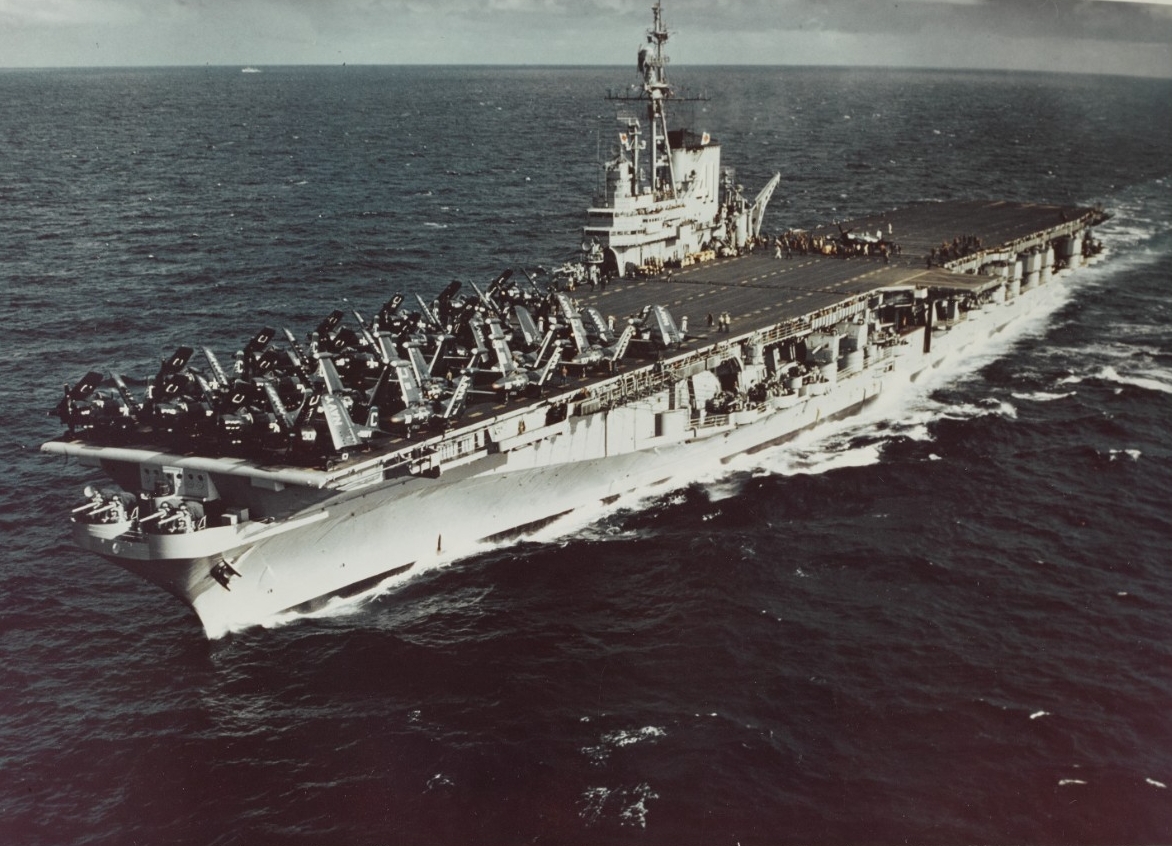
Midway, at sea off the Firth of Clyde, Scotland, prior to Operation Mainbrace in September 1952. (NARA, 80-G-K-13223.)
In August 1952, he boarded Midway (CVB-41/CVA-41) as the administrative and operations officer for Carrier Air Group 6 (CVG-6).[23] He later became the executive officer for Fighter Squadron 21 (VF-21), assigned to CVG-6.[24] In 1953, the Navy sent him to Pensacola, Florida.[25]
In July 1956, he was promoted to commander while assigned to NAS Pensacola. He married a Navy nurse, Elizabeth Moody, in the same month. Following their union, the new couple made their first cross-country move when Oxendine received orders to report to NAS Moffett Field, in Santa Clara County, California.
In the spring of 1958, Oxendine assumed command of All Weather Fighter Squadron 3 (VF[AW]-3) based at NAS Moffett Field.[26] This unit functioned primarily as a transitional training unit for the introduction of new aircraft models into the fleet.[27]
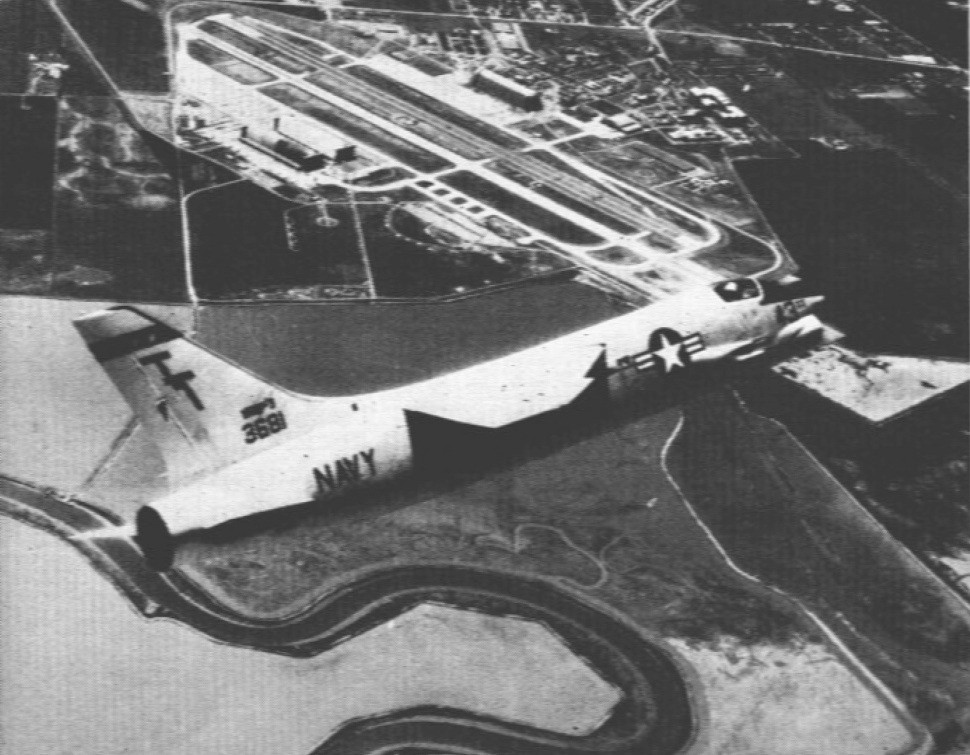
A U.S. Navy Vought F8U-1 Crusader of VF(AW)-3 in flight over Moffett Field, California, c. 1959. (All Hands, June 1959.)
In 1959, the unit was redesignated as Fighter Squadron 124 (VF-124). Its aircrew were responsible for training pilots and maintenance personnel on the new F8U (F-8) Crusader supersonic fighter jet.[28] The squadron’s insignia was inspired by its nickname, “Crusader College.”[29] Oxendine briefly served as the new unit’s executive officer before he was reassigned to NAS Chase Field, in Beeville, Texas, in the same year.[30] During his brief tenure at Chase Field, Air Training Unit 223 (ATU-223) was established, operating in the F-11F Tiger.[31]
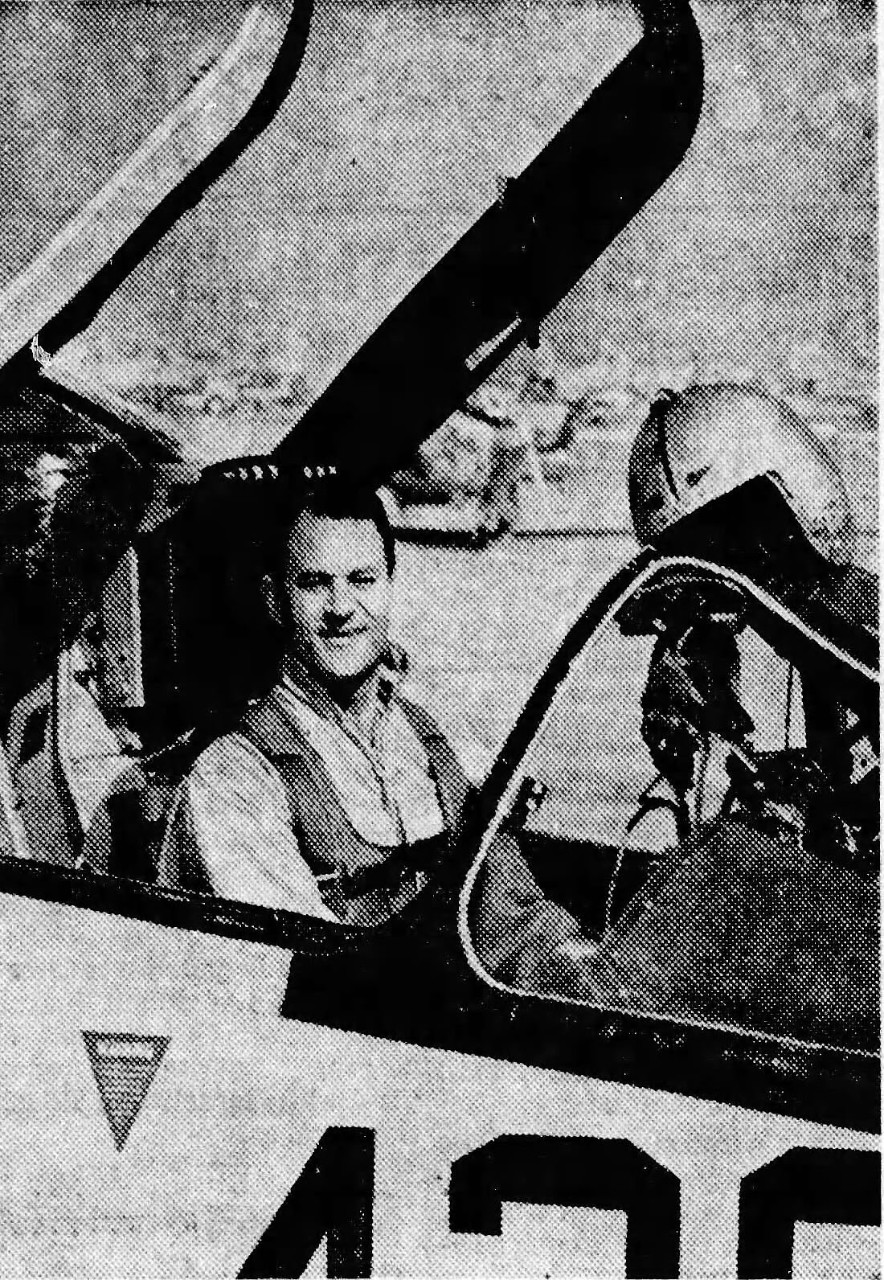
Commander Thomas Oxendine in the cockpit of an F8U Crusader, c. 1959. (Peninsula Times Tribune, 12 March 1959.)
In 1961, Oxendine returned to Pensacola. He was given command of Training Squadron Two (VT-2), known as the “Doer Birds,” at Whiting Field, the Navy’s largest primary training squadron.[32] Taking this command did not stop Oxendine from climbing into the cockpit, but this assignment did mark the end of his career as an aviator.
The following year, he was appointed as the deputy fleet information officer on the staff of Commander-in-Chief of the U.S. Pacific Fleet from November 1962 to July 1965.[33] At the onset of the Navy’s involvement in the Gulf of Tonkin during the conflict in Vietnam, he was detached and assigned as the public affairs officer for the commander of Task Force 77.[34]
During the Vietnam War, Oxendine was assigned to the Pentagon because of his experience. He was the aviation plans officer for the U.S. Navy’s Office of Information starting in November 1965.[35] Following that assignment, he became the head of the public affairs office for the Naval Air Systems Command in Washington, DC.
Following his retirement from the Navy in 1970 after 29 years of service, the Bureau of Indian Affairs (BIA) recruited Oxendine as the head of their public information office. He retired from BIA in 1987 after 17 years, leaving behind a legacy of service to his country and as an advocate for the rights of Native Americans.
Although he lived in Virginia for most of his life, Oxendine said “you can move the people, . . . the Lumbees especially, out of there [Robeson County] but home’s still in Robeson County to me.”[36] He was extremely grateful for everything that the Navy had given him, and he gave it back in full. He encouraged young Native American men and women to consider a career in the armed forces as an opportunity to choose their own “path of development and achievement.”[37]
Oxendine passed away on 27 May 2010 in Arlington, Virginia.
—Kati Engel, NHHC Communication and Outreach Division
***
Interviews with Thomas Oxendine
Oxendine, Thomas. “Interview with Thomas Oxendine 1980-11-06.” Interview by Lew Barton, 6 November 1980. Samuel Proctor Oral History Program, University of Florida.
Oxendine, Thomas. “Oral History: Interview with Native American Navy Pilot Thomas Oxendine.” Interview by Joe B. Johnston, 22 May 2007. Oral History Program, Arlington County Public Library.
Oxendine, Tom and Larry Chavis. Interview by Joe Oxendine. IMPACT, Pembroke State University. 20 February 1996. Available from Mary Livermore Library at University of North Carolina at Pembroke.
Further Reading
Burke, Laurence M. “The Naval Aviation You’ve Never Heard Of.” National Air and Space Museum, Smithsonian. 4 May 2020.
Cutler, Thomas J., and Rick Burgess. “Lest We Forget: Leadership by Example—Fighter Squadron 124 (VF-124).” Proceedings, September 2005.
Davies, Peter E. F-8 Crusader: Vietnam 1963–73. London: Bloomsbury, 2023.
Guglielmo, Thomas A. Divisions: A New History of Racism and Resistance in America's World War II Military. New York: Oxford University Press, 2021.
Locklear, Lawrence T. “Down by the Ol’ Lumbee: An Investigation into the Origin and Use of the Word ‘Lumbee’ Prior to 1952.” Native South 3, no. 1 (2010):103–17.
Lowery, Malinda Maynor. Lumbee Indians in the Jim Crow South: Race, Identity, and the Making of a Nation. Chapel Hill: University of North Carolina Press, 2010.
Murray, Paul T. “Who Is an Indian? Who Is a Negro? Virginia Indians in the World War II Draft.” Virginia Magazine of History and Biography 95, no. 2 (1987): 215–31.
***
Notes
[1] The state of North Carolina initially recognized this tribe as Croatan in 1885. The tribe first pursued federal recognition three years later in 1888. The name “Lumbee” was not officially adopted by the tribe until 1953. Although the federal government designated the Lumbee as Indians, full federal recognition of the tribe continues to be withheld. Lawrence T. Locklear, “Down by the Ol’ Lumbee: An Investigation into the Origin and Use of the Word ‘Lumbee’ Prior to 1952,” Native South 3, no. 1 (2010):103-17.
[2] Malinda Maynor Lowery, Lumbee Indians in the Jim Crow South: Race, Identity, and the Making of a Nation (Chapel Hill: University of North Carolina Press, 2010), 41–49.
[3] George E. Butler, The Croatan Indians of Sampson County, North Carolina. Their Origin and Racial Status. A Plea for Separate Schools (Durham, NC: Seeman Printery, 1916).
[4] This school was later renamed the Cherokee Indian Normal School, the same school where Thomas Oxendine received his secondary and college education.
[5] Joseph B. Oxendine, “Remembering ‘Mr. Tom,’” Robesonian, 18 June 2000.
[6] This school originally started as a primary and secondary institution. In 1926, the trustees added a two-year post-secondary program for training teachers. In 1939, it became a four-year institution renamed Pembroke State College of Indians. Until 1953, it was the only state-supported four-year college for Native Americans in the United States.
[7] News and Observer (Raleigh, NC), 27 February 1941; Geoff Fox, “First Indian Pilots Reunite, Reminisce After 40 Years,” Robesonian, 14 May 2001.
[8] Tom Oxendine and Larry Chavis, interview by Joe Oxendine, IMPACT, Pembroke State University (PSU), 20 February 1996, available from Mary Livermore Library at University of North Carolina at Pembroke.
[9] IMPACT interview, PSU, 1996.
[10] Thomas Oxendine, “Interview with Thomas Oxendine 1980-11-06,” interview by Lew Barton, 06 November 1980, Samuel Proctor Oral History Program, University of Florida (UFL); Thomas Oxendine, “Oral History: Interview with Native American Navy Pilot Thomas Oxendine,” interview by Joe B. Johnston, 22 May 2007, Oral History Program, Arlington County Public Library (ACPL), Arlington, VA.
[11] Macon News (Macon, Georgia), 13 February 1942; Atlanta Journal, 12 February 1942.
[12] News and Observer (Raleigh, NC), 30 March 1942; Greensboro Daily News, 3 April 1942.
[13] Charlotte Observer (Charlotte, NC), 12 May 1942.
[14] Register of the Commissioned Officers, Cadets, Midshipmen, and Warrant Officers of the United States Naval Reserve (Washington, DC: Government Printing Office [GPO], 1943), 1109.
[15] “Contributions of Native Americans to the U.S. Navy,” accessed 20 November 2023, Naval History and Heritage Command (NHHC).
[16] In 1917, Admiral Joseph James “Jocko” Clark was the first Native American(Cherokee) to graduate from the Naval Academy and, in 1925, the first to receive his wings as a naval aviator. Commander John C. Waldron (Sioux) completed his flight training a year later to become the second documented Native American to receive his wings. Oxendine was the first Native American who was not a graduate of the Naval Academy to complete the Navy’s flight program.
[17] “OS2U Kingfisher,” accessed 20 November 2023, National Naval Aviation Museum, Naval History and Heritage Command (NHHC); Naval Aviation News, February 1977, 20.
[18] USS MOBILE – War Diary, 7/1–31/44, World War II War Diaries, Other Operational Records and Histories, Records of the Office of the Chief of Naval Operations, Record Group (RG) 38, National Archives and Records Administration (NARA).
[19] U.S. Congress, Senate, Hearing Before the Committee on Interior and Insular Affairs, 91st Cong, 2nd Sess. (Washington, DC: GPO), 91; Interview with Thomas Oxendine, UFL, 1980.
[20] Interview with Thomas Oxendine, UFL, 1980.
[21] The name “Lumbee” was derived from the original name of the local Lumber River.
[22] Robesonian, 28 July 2015.
[23] Interview with Thomas Oxendine, UFL, 1980, 9.
[24] Robesonian, 7 April 1953.
[25] Army-Navy-Air Force Register 74 (1953): 8.
[26] Peninsula Times Tribune (Pensacola, FL), 7 March 1958.
[27] “Crusader College Carries On,” Naval Aviation News, June 1958, 22–23.
[28] Naval Aviation News, June 1958, 22–23.
[29] Naval Aviation News, June 1958, 22–23.
[30] All Hands, July 1959,: 22; “Conversation with CAPT Buzz Lloyd and CDR Tom Oxendine,” United States Navy Public Affairs Alumni Association 13, no 2 (April 2007): 9.
[31] All Hands, March 1960, 31.
[32] Naval Aviation News, April 1962, 39; Pensacola News Journal, 27 October 1961.
[33] Naval Aviation News, April 1962, 39.
[34] Interview with Thomas Oxendine, UFL, 1980.
[35] Interview with Thomas Oxendine, ACPL, 2007.
[36] Interview with Thomas Oxendine, UFL, 1980.
[37] Bureau of Indian Affairs, “Seminar Workshop Conference-Anadarko, Oklahoma-T. Oxendine,” 27 June 1973.


